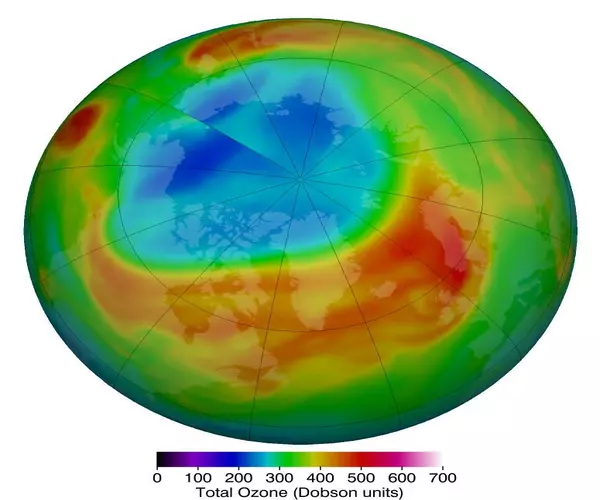Although ozone depletion and climate change are linked in several ways, ozone depletion is not a major cause of climate change. Ozone in the atmosphere has two effects on the Earth’s temperature balance. It absorbs ultraviolet radiation from the sun, which warms the stratosphere. It also absorbs infrared radiation emitted by the Earth’s surface, causing heat to be trapped in the troposphere. As a result, the climate impact of ozone changes varies with altitude.
The significant ozone losses observed in the lower stratosphere as a result of chlorine- and bromine-containing gases produced by humans have a cooling effect on the Earth’s surface. The ozone increases estimated to have occurred in the troposphere as a result of surface-pollution gases, on the other hand, have a warming effect on the Earth’s surface, contributing to the “greenhouse” effect.
According to new research, a lesser-known form of ozone is playing a significant role in heating the Southern Ocean, which is one of Earth’s primary cooling systems. Ozone is a gas that is made up of three oxygen atoms. Many studies have been conducted to investigate ozone in the stratosphere and its role in protecting people from the sun’s harmful ultraviolet radiation. Closer to ground level, in the troposphere, ozone is harmful to humans.
In terms of ocean heat uptake, tropospheric ozone has received little attention in the past. They should be, according to our models. The effects of both of these ozone changes are difficult to calculate accurately in comparison to the effects of changes in other atmospheric gases.
Wei Liu
New research led by UC Riverside scientists reveals this lower level ozone is adding a great deal of heat to the Southern Ocean — more than scientists previously understood. This finding has now been published in the journal Nature Climate Change.
“In terms of ocean heat uptake, tropospheric ozone has received little attention in the past. They should be, according to our models” Wei Liu, a climate scientist at UCR and the study’s lead author, explained. The effects of both of these ozone changes are difficult to calculate accurately in comparison to the effects of changes in other atmospheric gases. The open bars in the image below represent the upper ranges of possible effects from ozone changes, while the solid bars represent the lower ranges.
The oceans absorb the vast majority of the carbon and heat that humans emit into the atmosphere when they burn fossil fuels. The Southern Ocean, also called the Antarctic Ocean, collects a third of all excess carbon in the world’s atmosphere, and an estimated 75% of the excess heat collected by the world’s oceans. It is important to understand this heating so it can be controlled. Increased ocean warming is contributing to well-documented issues of sea levels rising.

Liu and an international team of scientists investigated climate model simulations with changes in ozone levels between 1955 and 2000 to further this understanding. These model simulations separated stratospheric and tropospheric ozone from other influences on Southern Ocean temperatures, allowing researchers to see how each factor affects temperatures.
While both stratospheric and tropospheric ozone contribute to Southern Ocean warming, the researchers discovered that the latter contributes significantly more. “Historically, ozone has been responsible for roughly one-third of ocean warming. This third is made up of roughly 40% stratosphere and 40% troposphere” Liu stated.
The Montreal Protocol was established in the 1980s in response to growing concern about a hole in the protective upper ozone layer caused by pollution. It was a landmark environmental agreement that codified the resolve of all 198 United Nations members to regulate the chemicals that caused the hole. Though satellite images still show low levels of stratospheric ozone over the Antarctic, progress has been made.
“Since the protocol was ratified, stratospheric ozone depletion has recovered somewhat, and climate models predict that it will continue to gradually recover,” Liu said. Liu believes that the findings of this study will be useful in determining where people can make additional changes to improve the environment.
Volatile organic compounds, or VOCs, emitted by products such as pesticides, tobacco smoke, and automobiles are gases that contribute to the formation of tropospheric ozone. The same is true for nitrogen oxides emitted by combustion, as well as carbon monoxide emitted by furnaces, gas stoves, and automobile exhaust. Many of these products can be altered to emit fewer VOCs.
“Tropospheric ozone is a pollutant in the atmosphere,” Liu explained. “We get the dual benefit of less air pollution and, most likely, less Southern Ocean warming if we reduce our production of this.”
















